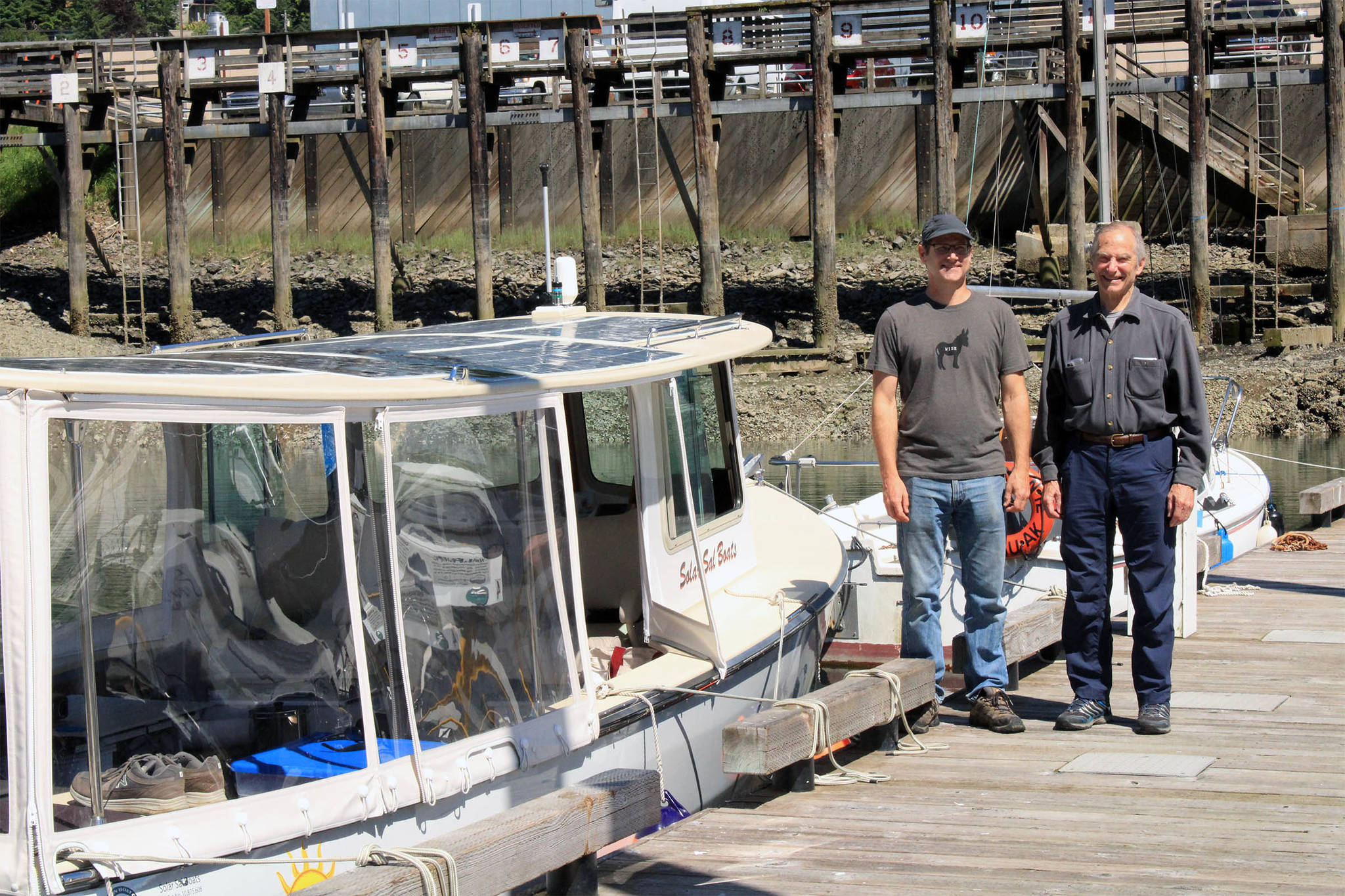Father and son David and Alex Borton are pursuing two missions.
First, the pair hopes to sail a boat through Alaska’s notoriously rainy and cloudy Inside Passage using only solar power. When they stopped in Juneau this week, after a journey that began in Bellingham, Washington, on May 26, they were well on their way to success on that front.
Their solar-powered vessel, the 27-foot Wayward Sun, which they designed, has faithfully carried the two through the Inside Passage. Along the way, they’ve delighted in seeing bears, eagles, whales, seals, sea lions and otters, they said Monday afternoon during an onboard interview with the Empire.
“We had rough days, smooth days, and two sunny days,” said Alex Borton, who showed off the hot plate that constitutes the galley and pointed to the berthing compartment in the boat’s bow.
He’s serving as the captain of the vessel during the trip. When he’s not sailing solar-powered boats, he’s a Bellingham-based psychotherapist.
“Being in a boat with the mountains, and the trees and the animals is a very different experience,” said David Borton, who compared this trip to Alaska to a more traditional trip he took to the state about a decade ago. He describes himself as “a first-class passenger” along the journey.
Although the boat can travel up to 5 knots on a sunny day with the batteries on full tilt, the pair has traveled at a leisurely pace. They stopped in Thorne Bay near Prince of Wales Island — where the elder Borton worked in the 1960s — and in Ketchikan before reaching Juneau over the weekend.
They plan to head to Glacier Bay next before shipping the vessel home on the ferry.
Running on sunlight
The boat never ran out of power, even with the clouds overhead, Alex Borton said. He said the pair refers to those conditions as “cloud shine.”
“The rain might slow you down,” he said, estimating that the boat can travel at 2-3 knots in the rain, with an assist from the solar-powered onboard batteries.
David Borton said the power of a solar-powered boat is “infinite,” pointing up to the roof-mounted solar panels.
“People always ask me how far you can go? That’s the wrong question. If it’s daylight, you don’t need to stop,” said David Borton, who is a retired professor of physics from Rensselaer Polytechnic Institute in Troy, New York.
He compared having an electric boat to having an electric car.
“Once you have an electric car, you don’t want to go back,” he said, adding that a solar-powered boat never needs to be plugged in to charge.
“So many boats sit around in the harbor all day,” David Borton said. “They could go out with full batteries.”
Tangled paraglider rescued from Mount Roberts
The second mission
In addition to enjoying the sights and sounds of the Inside Passage, the Bortons have a broader goal for the trip.
“We want to promote the concept and show that solar works,” Alex Borton said, adding that seeing Southeast Alaska was something he always wanted to do.
His father agreed.
“Every boat should be a solar boat,” he said.
To that end, the pair run a business called Solar Sal Boats, which is dedicated to designing boats that put solar technology into broader use.
The company’s website points out that solar power is quiet, fuel-free, and features low-maintenance electric propulsion systems.
“Our goal is to show that solar boats are practical and to make them affordable,” Alex Borton said.
You can live vicariously through the Borton’s journey, and learn more about how they prepared for it by visiting their blog at www.solarsaljourney.squarespace.com.

